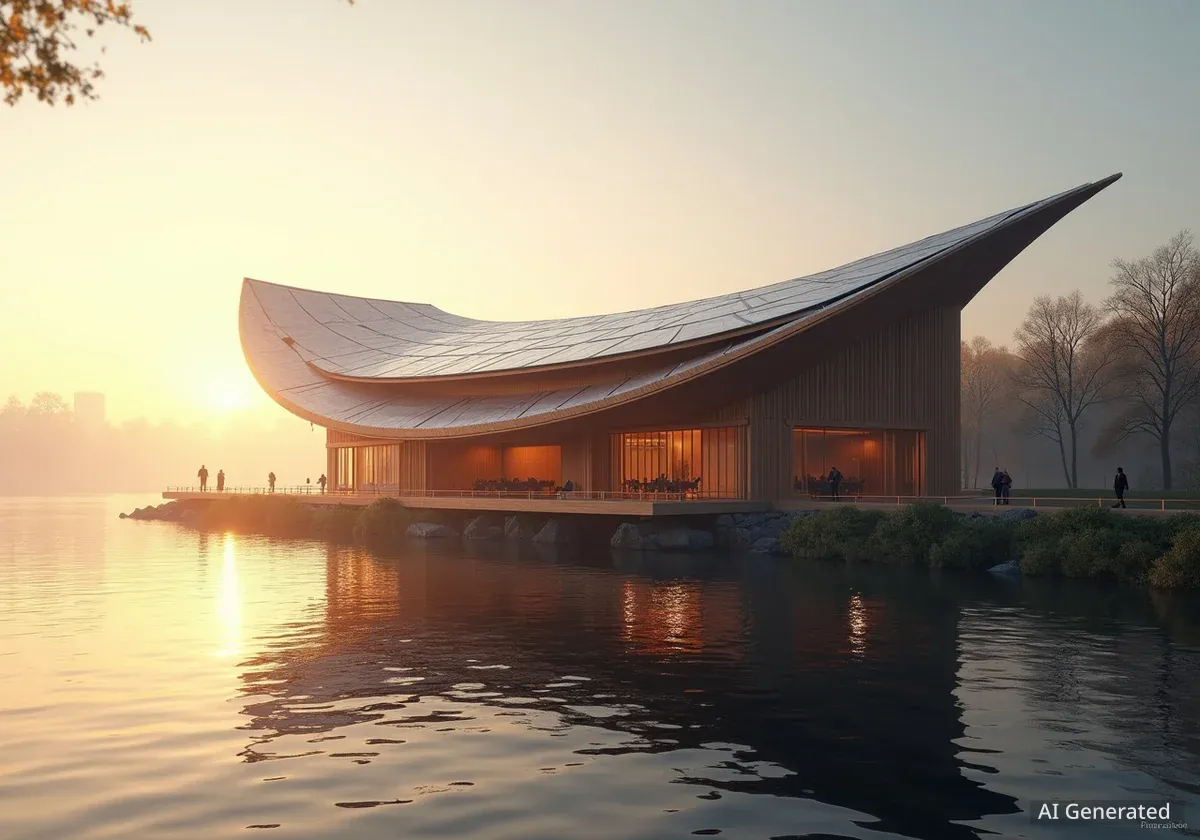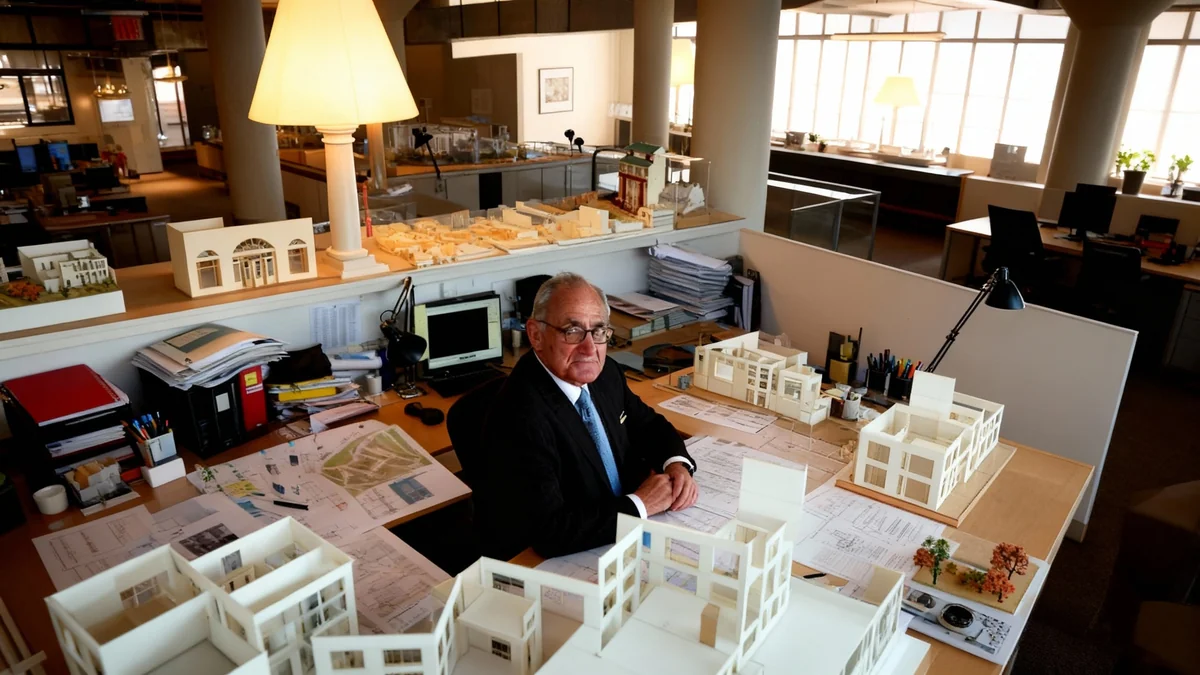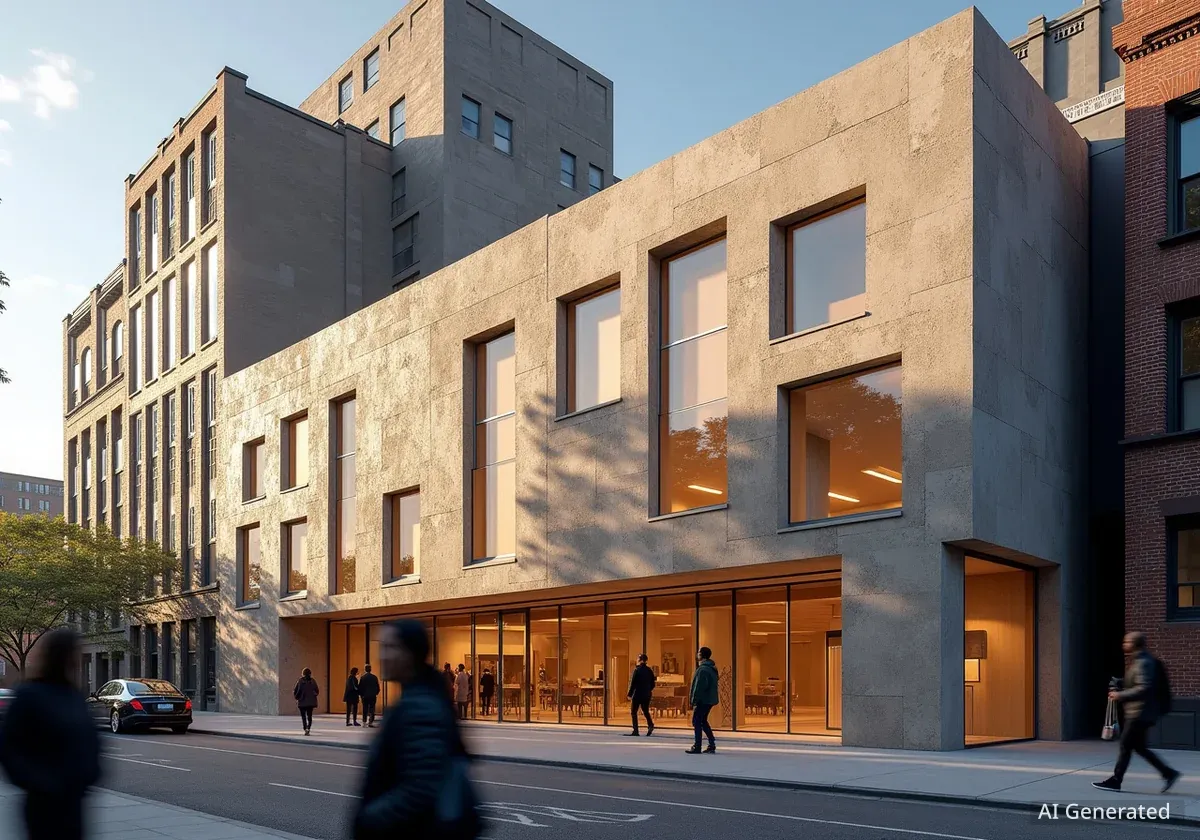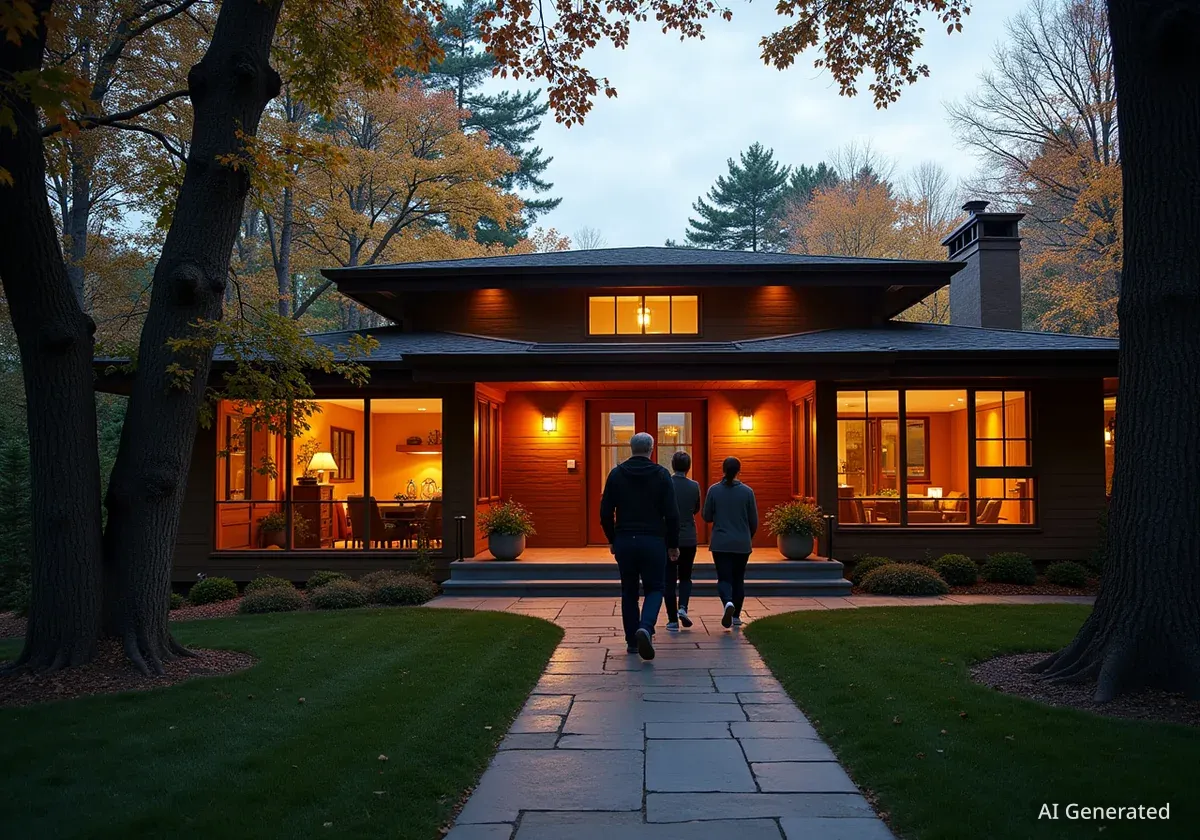Danish architecture firm BIG has released designs for a new conference center in Rouen, France. Named The Sail, the building will feature a distinctive swooping roof and a mass-timber structure. It is planned for a riverside location on the Seine, aiming to connect the city with its waterways.
Key Takeaways
- BIG designed The Sail conference center for Rouen, France.
- The building will use mass-timber construction and feature a sweeping, photovoltaic-covered roof.
- It will include two auditoriums, exhibition spaces, meeting rooms, and a restaurant.
- The design pays tribute to Rouen's naval heritage and traditional architecture.
- The Sail aims to create a public connection between the city and the Seine river.
New Riverside Landmark for Rouen
The Sail conference center is a significant project for the Rouen Normandy Metropolis. Its location along the Seine River is strategic. The design seeks to bridge the gap between the urban environment and the riverfront. This connection is a key aspect of the project's vision.
The building's structure will primarily use mass timber. This choice reflects a commitment to sustainable construction methods. The use of timber also references local architectural styles, specifically Rouen's traditional half-timbered houses. This blend of modern design with historical context is central to BIG's approach.
Project Facts
- Location: Rouen, France, along the Seine river.
- Architect: BIG (Bjarke Ingels Group).
- Primary Material: Mass timber.
- Key Features: Swooping roof, glass facades, photovoltaic panels.
- Facilities: Two auditoriums, exhibition areas, meeting rooms, restaurant.
Design Inspired by Naval Heritage
The most striking feature of The Sail is its roof. It is designed to mimic the shape of ship sails, a direct nod to Rouen's rich naval history. This sweeping roof will not only be an aesthetic element but also functional. It will be covered with photovoltaic panels to generate energy.
The roof's design also extends to create sheltered outdoor public spaces. On the city-facing side, the roof slopes down into six scalloped waves. These waves form canopies, providing cover for people outside. This integration of indoor and outdoor areas enhances the building's public function.
"Rising along the Seine, The Sail introduces a new silhouette to Rouen with its sweeping roofline paying tribute to the city's naval heritage and historic skyline of spires," said BIG partner Jakob Sand.
Sand further explained the building's dual interaction with its surroundings. "The building greets visitors from the highway with a vertical facade, while on the city side, the roof creates sheltered canopies, extending the foyer into a human-scaled public landscape." This thoughtful design considers both broad urban views and immediate pedestrian experiences.
Sustainable Construction and Public Spaces
The Sail emphasizes environmental responsibility. Its mass-timber construction reduces its carbon footprint. The interiors are designed to maximize natural daylight, decreasing the need for artificial lighting. The energy-producing roof further contributes to its sustainability goals.
Inside the center, the timber structure and the curving roof will remain exposed. This design choice highlights the building's materials and construction. It also creates a warm and natural aesthetic for visitors and users. The exposed timber adds to the building's character.
Context: Mass Timber in Architecture
Mass timber refers to engineered wood products that are often used as structural elements in buildings. These products include cross-laminated timber (CLT) and glulam. They offer several benefits:
- Sustainability: Wood is a renewable resource, and timber construction can store carbon.
- Speed of Construction: Components can be prefabricated off-site, leading to faster assembly.
- Aesthetics: Exposed timber provides a natural, warm look.
- Structural Performance: Mass timber can be strong and durable, suitable for multi-story buildings.
This method is gaining popularity globally for its environmental and construction advantages.
The surrounding landscape will also feature green elements. Trees and planted areas will be integrated around the building. Rainwater collected from the roof will be used to water these plants. This holistic approach ensures the project is environmentally conscious from its core design to its operational aspects.
BIG's Recent Projects
BIG, or Bjarke Ingels Group, is known for its innovative and often bold architectural designs globally. The firm has been involved in several other notable projects recently.
For example, BIG recently unveiled conceptual designs for a new city in the American desert. This project, described as "built-from-scratch," aims to explore new models for urban living and sustainability. It showcases the firm's ambition to push architectural boundaries.
Another significant development is the 670 Mesquit complex in Los Angeles. This four-building project recently received planning approval. The initial designs for this complex were released nine years ago, highlighting the long development cycles for major urban projects. These diverse projects demonstrate BIG's wide range of work across different scales and locations.
The images and video for The Sail project were created by Atchain. This visualization studio frequently collaborates with architectural firms to bring designs to life before construction begins. Such visualizations are crucial for public understanding and project development.
Impact on Rouen
The Sail is expected to become a new cultural and economic hub for Rouen. By providing modern conference and exhibition facilities, it can attract national and international events. This could boost local tourism and business activity.
Moreover, its design and public spaces are intended to enhance the quality of life for residents. The connection to the Seine river offers new recreational opportunities. The building's sustainable features also align with modern urban development goals, aiming for a positive long-term impact on the city and its environment.
The integration of nature, heritage, and modern functionality makes The Sail a significant addition to Rouen's urban fabric. It represents a forward-looking approach to public infrastructure, combining aesthetic appeal with practical utility and environmental consciousness.




